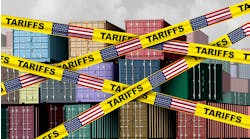From Crypto to Chips: Top 10 Policy Pronouncements for 2023
As Yogi Berra once said, making predictions is hard, especially about the future. So, looking ahead to the New Year, ITIF can offer the following predictions with only 90% confidence. The other half is prescriptive:
1. Calm down about crypto collapse. The crypto craze was never a tech thing; it was a Ponzi thing that just happened to use fancy tech. Unfortunately, Americans seem to be incapable of differentiating Ponzi schemes from real investment vehicles. While we shouldn’t have sympathy for Sam Bankman-Fried, neither should we have much sympathy for the “greater fools” who got hosed; all they wanted to do was make a killing on the back of some other greater fool. The lesson should be simple: New financial “investment” vehicles need to be regulated, even if their advocates say, “This time is different.”
2. It’s time to concede efforts to limit and break up “big tech” have been misguided. The U.S. government has almost always been a day late and a dollar short in its efforts to break up big technology firms, going after companies just before they are about to be disrupted by other players in the market. Antitrust authorities have weakened many U.S. technology leaders, as we saw with AT&T, IBM, Xerox, and others. Hopefully, with Republicans controlling the House, less ideological heads will prevail and work to limit the anticorporate activists in the Biden administration.
3. The EU’s anti-U.S. tech juggernaut will likely continue. Alas, it’s hard to envision level heads prevailing in Europe, which in all likelihood will double down on its neo-Luddite, protectionist path of overregulating every emerging technology it can find, especially if doing so creates a disadvantage for American companies. Unfortunately, with the exception of some brave efforts by Commerce Secretary Gina Raimondo, the Biden administration has been happy to turn a blind eye to the EU’s digital protectionism. 2023 should be the year that Washington tells Brussels that if it wants U.S. cooperation, it needs to renounce “digital sovereignty.”
4. Industrial policy is unlikely to make a comeback. After passing the CHIPS and Science Act, official Washington declared, “industrial policy is back.” But as much as we wish that was the case, it’s likely not. CHIPS was a defense measure focused on ensuring our military is not dependent on Chinese/Taiwanese semiconductors. And despite the efforts of Sens. Chuck Schumer (D-NY) and Todd Young (R-IN), the science component of the bill was largely watered down by the science establishment to ensure scientists have carte blanche to do whatever they want to do with around two-thirds of the money, instead of tying it to key areas of strategic interest and translational research useful for industry. Most liberal Democrats in Congress will continue to push for social and climate spending. Many Republicans will push for spending cuts. And after the massive spending binge the government engaged in over the last two years, money for new initiatives will be scarce, as we saw with the relatively measly appropriations for the non-chips component of the CHIPS and Science Act. Going forward, that means industrial policy efforts will need to dovetail with other priorities, such as: defense spending, tax policy (e.g., expanding the R&D tax credit), regulatory easing, improving existing programs and restraining China.
5. Pass some “no-brainers.” If big things are off the table, then a bunch of smaller things can make up the difference. Here’s a menu: Restore R&D and capital expenditure tax expensing and pass some important bills such as Sen. Marco Rubio (R-FL) and Rep. Ro Khanna’s (D-CA) National Development Strategy and Coordination Act, Sen. Chris Coons’ (D-DE) Industrial Finance Corporation Act and bipartisan legislation to establish an Office of Global Competition Analysis.
6. China, China, China. As ITIF has proposed, Congress should reform Section 337 of the 1930 Tariff Act to let the U.S. International Trade Commission bar imports when domestic industries suffer harm due to unfair competition. But even then, the China challenge will not recede despite apologists’ assessments that China’s economy stumbling. With a new Select Committee on China in the works, likely to be led by Congressman Mike Gallagher (R-WI), coupled with bipartisan efforts in the Senate by members like Sens. Coons (D-DE), John Cornyn (R-TX), Marco Rubio (R-FL), and Mark Warner (D-VA), we can look forward to important congressional action to limit China’s advance. But while constraining China’s rise is key, the goal should be balance, and not complete decoupling.
7. Broadband communism? It’s no secret that over the last decade, populists on the left have campaigned to replace America’s successful private sector broadband system with one that is government-owned (municipal networks), or at minimum, one that is heavily regulated. 2023 will be a key year in deciding America’s broadband future as the Commerce Department invests around $50 billion in broadband networks. Anticorporate activists want that money spent on government-owned networks, including “over-building” in places that already have broadband. If that happens, expect broadband networks to perform as well as America’s roads and bridges.
8. Privacy regulation? Yes. AI regulation? No. Keep Section 230? Yes. Perhaps 2023 can be the year of reasonable privacy legislation. With Republicans in charge of the House, the odds of adopting an innovation-killing, GDPR-like privacy bill are now thankfully low. Hopefully, the odds of passing a reasonable, cost-effective national privacy bill that limits private right of action and completely preempts states are high. When it comes to AI regulation—in all of its various guises (an AI bill of rights, human-centered AI, etc.)—the odds appear small, thankfully. It’s way too early to pass regulation on a technology that is still in its very early stages of use and adoption. And when it comes to content moderation, Congress needs to avoid throwing the tech baby out with the bathwater—which means mending, not ending Section 230.
9. Oversight opportunities abound. With so much legislation enacted for infrastructure, industrial technology and energy, the key issue for 2023 will be implementation. Will the administrative agencies be able to implement this in effective ways, or will bureaucracy and social policy concerns slow down and even derail efforts? Buy America provisions could significantly increase costs and slow deployment of key infrastructures including broadband and smart grid. Efforts to complicate CHIPS Act funding could mean that the goal of building a bunch of new fabs in America could be compromised. And as noted above, is the one last opportunity to close the rural broadband divide going to be wasted by funding muni-overbuilds? These are all good topics for House Republicans to oversee.
10.Will pro-innovation National Developmentalism gain sway? ITIF was founded on the principle that the most important force for global and American improvement is innovation. While that is obvious to us, it clearly far less obvious to much of Washington. Many on the left now eschew innovation and growth in favor of redistribution and stasis, while many on the right prioritize liberty and free markets, even when that results in less innovation. But partly because of the China challenge, many more on both the left and the right are coming around the view that fostering innovation through a program Mike Lind and I call “national developmentalism” is key. Hopefully, the national developmentalism camp will grow in 2023. Watch for an invitation to join us in Washington on April 27 for a day-long conference on the theme of “Reviving America’s Hamiltonian Tradition to Win the Economic and Technology Competition With China.”
As founder and president of the Information Technology and Innovation Foundation (ITIF), Robert D. Atkinson leads a prolific team of policy analysts and fellows that is successfully shaping the debate and setting the agenda on a host of critical issues at the intersection of technological innovation and public policy.
This article originally appeared on the ITIF website. It is used with permission.




